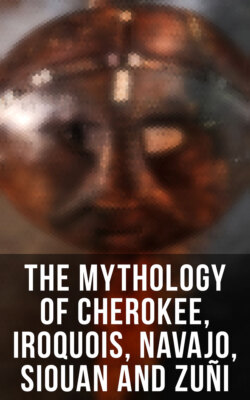Читать книгу The Mythology of Cherokee, Iroquois, Navajo, Siouan and Zuñi - James Mooney - Страница 39
На сайте Литреса книга снята с продажи.
Early Wars with the Whites
ОглавлениеNumerous minor wars between the Indians and the colonists followed upon the settlement of Virginia, but on the whole the relations between them were peaceable until the general massacre of white women and children on March 22, 1622, while the men of the colony were working in the fields. Three hundred and forty-seven men, women, and children were slain in a single day. This holocaust was the signal for an Indian war which continued intermittently for many years and cost the colonists untold loss in blood and treasure. Inability to comprehend each other's point of view was of course a fertile source of irritation between the races, and even colonists who had ample opportunities for observing and studying the Indians during a long course of years appear to have been incapable of understanding their outlook and true character. The dishonesty of white traders, on the other hand, aroused the Indian to a frenzy of childish indignation. It was a native saying that "One pays for another," and when an Indian was slain his nearest blood-relation considered that he had consummated a righteous revenge by murdering the first white man whom he met or waylaid. Each race accused the other of treachery and unfairness. Probably the colonists, despite their veneer of civilization, were only a little less ignorant than, and as vindictively cruel as, the barbarians with whom they strove. The Indian regarded the colonist as an interloper who had come to despoil him of the land of his fathers, while the Virginian Puritan considered himself the salt of the earth and the Indian as a heathen or 'Ishmaelite' sent by the Powers of Darkness for his discomfiture, whom it was an act of both religion and policy to destroy. Vengeful ferocity was exhibited on both sides. Another horrible massacre of five hundred whites in 1644 was followed by the defeat of the Indians who had butchered the colonists. Shortly before that event the Pequot tribe in Connecticut had a feud with the English traders, and tortured such of them as they could lay hands on. The men of Connecticut, headed by John Mason, a military veteran, marched into the Pequot country, surrounded the village of Sassacus, the Pequot chief, gave it to the flames, and slaughtered six hundred of its inhabitants. The tribe was broken up, and the example of their fate so terrified the other Indian peoples that New England enjoyed peace for many years after.
